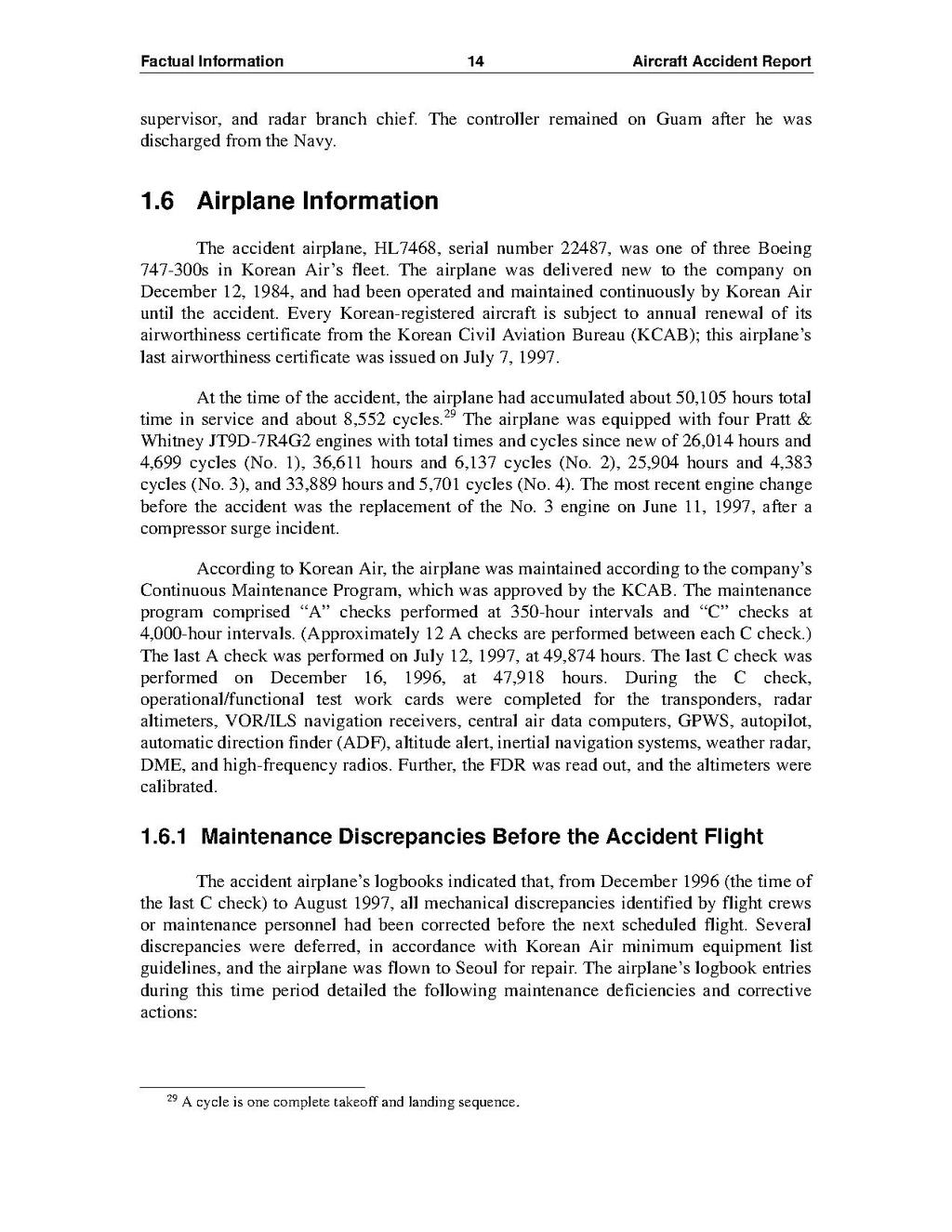supervisor, and radar branch chief. The controller remained on Guam after he was discharged from the Navy.
1.6 Airplane Information
The accident airplane, HL7468, serial number 22487, was one of three Boeing 747-300s in Korean Air's fleet. The airplane was delivered new to the company on December 12, 1984, and had been operated and maintained continuously by Korean Air until the accident. Every Korean-registered aircraft is subject to annual renewal of its airworthiness certificate from the Korean Civil Aviation Bureau (KCAB); this airplane's last airworthiness certificate was issued on July 7, 1997.
At the time of the accident, the airplane had accumulated about 50,105 hours total time in service and about 8,552 cycles.[1]The airplane was equipped with four Pratt & Whitney JT9D-7R4G2 engines with total times and cycles since new of 26,014 hours and 4,699 cycles (No. 1), 36,611 hours and 6,137 cycles (No. 2), 25,904 hours and 4,383 cycles (No. 3), and 33,889 hours and 5,701 cycles (No. 4). The most recent engine change before the accident was the replacement of the No. 3 engine on June 11, 1997, after a compressor surge incident.
According to Korean Air, the airplane was maintained according to the company's Continuous Maintenance Program, which was approved by the KCAB. The maintenance program comprised "A" checks performed at 350-hour intervals and "C" checks at 4,000-hour intervals. (Approximately 12 A checks are performed between each C check.) The last A check was performed on July 12, 1997, at 49,874 hours. The last C check was performed on December 16, 1996, at 47,918 hours. During the C check, operational/functional test work cards were completed for the transponders, radar altimeters, VOR/ILS navigation receivers, central air data computers, GPWS, autopilot, automatic direction finder (ADF), altitude alert, inertial navigation systems, weather radar, DME, and high-frequency radios. Further, the FDR was read out, and the altimeters were calibrated.
1.6.1 Maintenance Discrepancies Before the Accident Flight
The accident airplane's logbooks indicated that, from December 1996 (the time of the last C check) to August 1997, all mechanical discrepancies identified by flight crews or maintenance personnel had been corrected before the next scheduled flight. Several discrepancies were deferred, in accordance with Korean Air minimum equipment list guidelines, and the airplane was flown to Seoul for repair. The airplane's logbook entries during this time period detailed the following maintenance deficiencies and corrective actions:
- ↑ A cycle is one complete takeoff and landing sequence.
